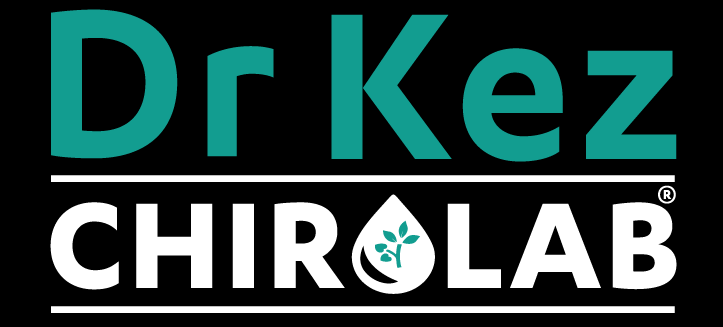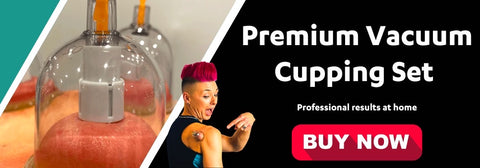
The most common cause of lower back pain, that is often overlooked 👀
Lower back pain can cover a range of different ailments. Pain may be experienced deep in the lower back, where the spine meets the sacrum, or higher up where the lumbar spine curve is at its peak. It can also be experienced lower down, where the pelvis meets the sacrum, which is often felt predominantly on one side. Each of these different locations can represent a different issue and needs to be treated differently, to get to the cause of the pain, rather than just mask the symptoms. Not only can the location be different, but the quality of the pain can be different, from intermittent, sharp, stabbing pain, to a constant ache or burning sensation. Usually the location of the pain reveals the joint involved, whereas the quality of the pain tends to indicate the specific structures involved, such as ligaments, capsules, discs, muscles etc. Understanding this, highlights a very important fact, that treating all lower back pain the same is futile. This often results in only partial resolution with ongoing exacerbations in the future. No thanks 🖐 but unfortunately and all too common picture.

What is the most common cause of lower back pain?
In my 20 plus years of Chiropractic clinical practice my quest to get to the root cause of lower back pain has revealed one extremely consistent finding that, for some unknown reason, is frequently overlooked by most practitioners. Although most lower back pain complaints are the result of a known cause, like a fall, motor vehicle accident or a lifting incident, some lower back pain presents insidiously, which means, without a known causative factor. This can be extremely frustrating for the patient, as they don’t know what activity to avoid to prevent this happening again in the future, leaving them in fear that this could happen again at any time. More often than not, in these insidious cases, and to be completely honest, even in the cases of known cause, the contributing factor comes back to muscular imbalance. When the body has an uneven pull from two opposing muscles surrounding a joint, eventually the force of the tight or overworked muscle wins out and pulls one of the bones making up that joint, into a different physiological position. When a joint is pulled into this less than optimal position, joint dysfunction takes place, leading to inflammation and pain in the surrounding areas. What’s more, these bio-mechanical changes have an influence on the rest of the body, especially when it is experienced in the lower back, which forms the foundation for the remainder of the spine, as well as being a closed loop circuit to lower limb issues, like Achilles tendonitis and plantar fasciitis for example. More on this later!!

How do I know if have any muscular imbalances?
The above photo demonstrates a number of different postural presentations that I see in clinical practice on a regular basis. Postural analysis is a great way to highlight the muscular imbalances that commonly occur, that lead to ongoing lower back problems in many patients. If you are experiencing lower back pain, perhaps you ask someone to take a photo of you from the side, with you looking straight ahead. Stand in a natural position to get the best indication of your true posture (don’t pull your shoulders back and correct your posture because you know a photo is being taken 😉 ). Compare your photo to the above picture and see which one best represents you. Muscular imbalances happen slowly over time and are frequently present before any pain or issues are felt. Even if you don’t currently have a lower back problem, but you do own a lower back 😊 give this a go!! This is a quick and easy way to assess if you are at risk of developing a lower back problem in the future, or it can help us to determine the best course of treatment if your are already experiencing any type of lower back pain or dysfunction.

I have one of these postural imbalances, what do I do now?

Depending on which of these postures you have will determine the recommended course of treatment, because different muscles are tight and weak in each of these examples. Let’s take the middle picture (excessive lordosis) as an example, as this is the most common postural presentation by far. This posture is commonly caused by someone who spends a lot of their day sitting. The hip flexors become shortened in the sitting position, and when you finally stand up again, this shortened muscle pulls on the lumbar spine causing the pelvis to rotate anteriorly (represented by the curved black arrow). This anterior tilt of the pelvis results in an increased curve in the lumbar spine, which gets more accentuated the tighter the muscles become.

This condition not only involves tight hip flexors, but it also results in a tightening of the lower back muscles between the ribs and the spine, further accentuating the excessive lumbar lordosis. Meanwhile the glutes become dysfunctional due to the tilt of the pelvis and the abdominal muscles become de-conditioned, further exacerbating the posture. The picture below highlights the weak and de-conditioned muscles verses the tight, shortened muscles.

How do I fix these tight muscles?
Basically in a nutshell, it involves working on loosening the tight muscles and strengthening the weak ones. Reducing the pull on a tight muscle can be done in a number of ways with the help of a practitioner using adjustments, dry needling and massage, or at home doing stretching, rolling and cupping. Each of these different modalities has its inherent benefits, but when looking at the overall recovery rate of my patients, I have definitely found that a combination of Chiro treatments with home stretching and cupping has been the fastest recovery option by far. Keep in mind, that the causative factor of a lot of these postures is being in a set position for a prolonged period of time, like sitting at a desk all day, leaning over a work station, bending over cleaning or gardening etc. As a result of this ongoing exposure, work to undo these muscular imbalances needs to be done at home as well, to create long term postural change leading to lasting results. It’s a little naive to think that years worth of desk work is going to be resolved with a couple of adjustments from your Chiro alone. 😵💫

How does cupping help with lower back pain?
In the lower back and pelvic area, there are quite a number of muscles, which are layered on top of each other with varying different roles, resulting in a range of different functions surrounding the overall movement of the lower back. Each of these muscles is designed to move independently of one another to give full mobility and functionality of the lower back and pelvic area. Unfortunately, when muscles become tight and lose mobility, they adhere to one another causing highly dysfunctional movement (ie. one muscle wants to pull in one direction, while the other is wanting to pull in another direction). This leads to stiffness, inflammation and pain. Once the muscles are stuck to one another, the best modality by far, for breaking up these adhesions is cupping therapy. The vacuum pressure draws the top layer of muscle and skin up into the cup, initially pulling with it the next layer of muscle also. After a period of approximately 2-3 minutes the adhesions between the two layers of muscle separate, breaking them free from one another, allowing them to return to their normal independent function, rather than a combined dysfunctional movement. Not only this, but the fascia is released and the blood flow is restored enhancing repair and regeneration, and the lymphatic drainage system can return to normal again to assist the release of local toxins and inflammation. There are so many benefits in using cupping therapy to treat muscular issues, not only in the lower back, but all over the body. Let’s face it, for optimal function we all need good muscle and joint movement and a free flowing blood supply and lymphatic drainage system, good news all round 😊 To find out more about the premium vacuum cupping set and to watch a video on how easy it is to do cupping at home click here.
If you would like some guidance as to which muscles you need to stretch and which ones you need to strengthen feel free to book an appointment either face to face with Dr Kez in Watsonia or via online Telehealth for a full assessment to be done and a program developed tailored specifically to your needs.







